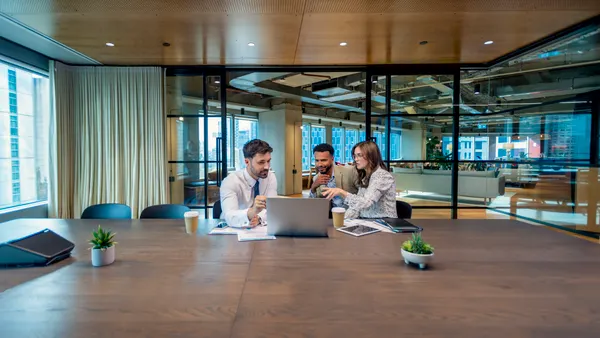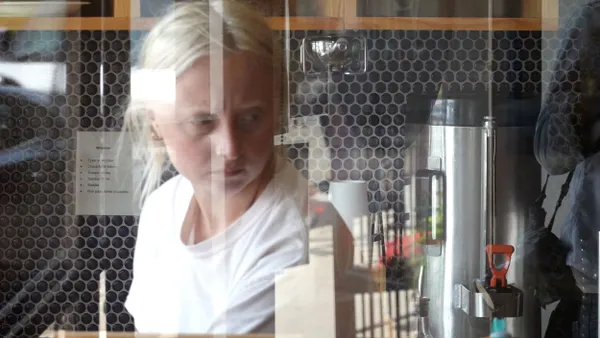Dive Brief:
- Due to inflation and gas prices, employees spend twice as much going to the office than working from home, a recent pulse check on the current state of work by videoconferencing firm Owl Labs found.
- The commute is workers’ biggest expense, at $14.60 per day, according to the 2,300 full-time employees who responded to the survey. Lunch ($13.07/day) and dinner ($10.98/day) are the second and third top costs.
- There may be a happy middle. A growing number of people find they work best in a third place, like a co-working space, the survey found. Around a quarter of employees said they were most productive collaborating (26%) or getting consensus (24%) working in such a space. There’s also an upside for employers: Companies are cutting real estate costs by providing access to co-working spaces near employees’ homes, Owl Labs said.
Dive Insight:
As 2022 enters its last quarter, two things about the immediate future of work should be clear. First, everyone wants something different. An October 2021 report from wellness research and solutions firm Vitality Group found that 22% of respondents said they didn’t want to WFH at all, while 30% said they’d like to work remotely every day.
There’s also a split between employees and management, according to a 2021 survey by Slack’s Future Forum, HR Dive reported. More than three-quarters (76%) of workers didn’t want to return to the office full time, compared to 68% of executives who wanted to work in the office all or most of the time. Even among CEOs there’s a difference of opinion. Fewer than half of those who responded to a recent survey by Marcum LLP and Hofstra University’s business school said they were working in-office five days per week.
These surveys have led experts to stress a second point: Workplace solutions are likely to play out differently from organization to organization. To oversee planning, various experts have suggested that company execs create a leadership position to coordinate aspects of a hybrid work experience. The process should include collaborative conversations between HR teams, CFOs, other execs and employees, the one leader previously told HR Dive.
And to avoid inaccurate assumptions, decision-makers should ask employees how they work best before they develop their hybrid policies, a Myers-Briggs exec said in a statement accompanying a July report by the personality assessment firm.
The strategy aligns with Owl Labs’ finding that location appears to matter when it comes to optimizing productivity. More than half (57%) of employees say they are more productive working independently in a remote location, while 30% of respondents prefer doing solo work in the office. About half of workers (51%) say they think more creatively when working remote, versus 30% who prefer creative thinking in the office. Nearly half (49%) of employees say they focus and meet deadlines better working remotely.
But the office also has its fans: 60% of workers like meeting new people in the office. Slightly more than half (51%) say team meetings are more productive there.
Meanwhile, those tasked with developing workspace policies should keep in mind that the office of the future could be anywhere: a cafe, a virtual home office or a public space, one exec said. Stakeholders in the office return must make office space as appealing as an office with no commute or make it superior to all other spaces where employees can meet, he said.












